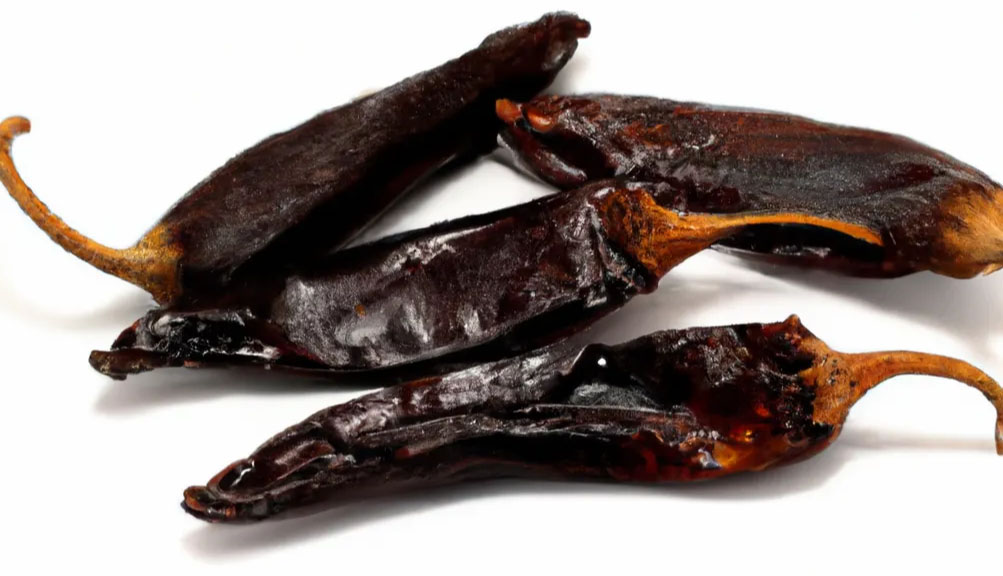Botanical Name: Capsicum annuum
If there is a spice that can represent the heart and soul of Mexican cuisine, it is Guajillo Chiles. Known as the “workhorse” of chiles, it is widely used in Mexican cuisine due to its mild heat and sweet, fruity flavor.
They are made from dried Mirasol chiles, which are harvested when ripe and then sun-dried to achieve their deep red color and leathery texture. Guajillo chiles are typically about 4 to 6 inches long and have smooth, glossy skins, which make them easy to recognize. Along with ancho and pasilla chiles, guajillo chiles form part of the holy trinity of Mexican dried chiles, often used in a wide variety of traditional dishes.
On the Scoville scale, Guajillo chiles range between 2,500 and 5,000 Scoville Heat Units (SHU), giving them a mild to moderate heat level comparable to jalapeños. However, their heat is generally smoother and more subdued, allowing their distinctive flavor to shine through. The flavor of guajillo chiles is often described as earthy and sweet, with notes of dried fruit, green tea, and a hint of berry-like sweetness. Some also detect a subtle smokiness and tang, making them a versatile choice for adding both flavor and color to dishes.
In Mexican cooking, guajillo chiles are typically rehydrated before being blended into sauces, pastes, or marinades. One of their most common uses is in traditional mole sauces, where they contribute a deep, rich flavor that complements the sweetness of chocolate and the warmth of other spices. Guajillo chiles are also used in adobo sauces, salsas, and soups like pozole and birria, adding a bright, slightly tangy taste. Their vibrant red color also enhances the visual appeal of dishes.
While guajillo chiles are commonly used on their own, they are frequently paired with other dried chiles like ancho, pasilla, or chipotle to create layers of flavor in traditional Mexican sauces and stews. Their slightly sweet, tangy profile balances the deeper, smokier notes of other chiles, making them a key ingredient in achieving the complexity of flavors characteristic of Mexican cuisine.

